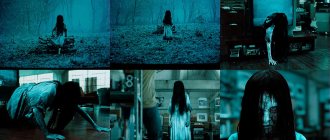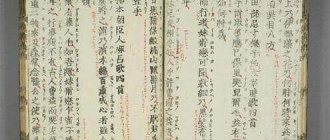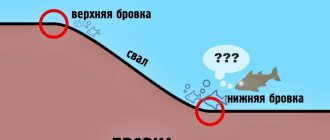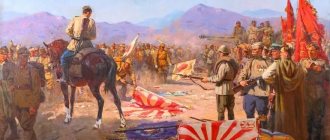A Japanese girl shocked the world with her story of 1000 cranes.
Many years have passed since the Japanese girl Sadako Sasaki shocked the whole world with her story . She was born on January 7, 1943, when World War II was in full swing. Born in the city of Hiroshima, she lived there when her hometown was attacked by an atomic bomb. At this moment she was only two years old.
The house where Sadaki lived was located one and a half kilometers from the epicenter of the explosion, but by luck the girl was not injured. For nine years after the bombing, she lived the life of children her age and was healthy, cheerful and full of energy. Everything changed in November 1954 , when she showed the first signs of radiation sickness and on February 21, 1955, she was hospitalized with a diagnosis of blood cancer.
Created by sculptors Kazuo Kikuchi and Kiyoshi Ikebe. The authors of the monument believe that it symbolizes hope for a peaceful future and therefore called the monument the Children's Monument to Peace. Locals more often call it the Obelisk of Paper Cranes.
It stands surrounded by the large trees of the Peace Park, very close to the place over which the atomic column shot into the sky on August 6, 1945. At the base of the monument there is an inscription: “This is our cry and our prayer for world peace.” Several senbazuru are enclosed around the monument in glass cases, Sadako Sasaki (佐々木禎子) grew up as a strong, healthy and active child. During the atomic bombing of Hiroshima, she was at home, just one and a half kilometers from the epicenter of the explosion. At the age of 11, she showed signs of radiation sickness, and the girl was admitted to the hospital with a diagnosis of leukemia.
On August 3, 1955, she was once again visited by her friend, Chizuko Hamamoto. She brought with her a sheet of gilded paper and made a crane out of it. And she told Sadako an old Japanese legend. Anyone who folds 1000 paper cranes will receive a gift from fate - they can make a wish that will definitely come true. Desire - the crane will bring it in its beak.
“senbazuru” - 1000 cranes fastened together.
Sasako Sadaki with her classmates (center, front row)
Sadako began making cranes from whatever paper she could find. She added up her thousand by the end of August and continued to add up. But the desire to survive was not fulfilled.
At the Peace Memorial Museum, paper cranes made by Sadako are placed next to a mock-up of an atomic bomb as two incompatible symbols of life and death. All the letters written to her in the hospital were published, and funds began to be raised throughout Japan for the project of a monument to Sadako - and to all the children who died as a result of the nuclear bombing.
In 1956, Sadako's famous open letter to her mother, Sasuke Fujiko, was published.
The version that Sadako did not have time to make a thousand cranes, but only 644, and the missing ones were added by her friends after Sadako’s death, is a work of fiction - it originates in the novel “Sadako and the Thousand Paper Cranes” by the American writer Eleanor Coerr. (“Sadako and the Thousand Paper Cranes”), published in 1977. In reality, Sadako folded her thousand cranes.
The song's original title is “The Japanese Crane,” lyrics by Vladimir Lazarev, music by Seraphim Tulikov, but usually appears anonymous. The song was popular in pioneer camps of the 1980s and beyond (in both the official and unofficial song repertoire), and there are many similar versions.
Returning from Japan, having walked many miles,
A friend brought me a paper crane.
There is a story connected with it, there is only one story -
About a girl who was irradiated.
The tragedy of Japan
You may be interested in: Rectilinear uniform and uniformly accelerated motion in physics
Sadako Sasaki is a Japanese girl who survived the American nuclear bombing of Hiroshima when she was very young. She was born on July 7, 1943. At this time, people were reaping the fruits of World War II in Europe, where thousands of children died - from bombs and shells, hunger, inhumane conditions in concentration camps and Jewish ghettos. Trouble struck Sadako on August 6, 1945, when American pilots dropped an atomic bomb on her hometown of Hiroshima. Three days later, this fate befell the city of Nagasaki.
You may be interested in:Using apostrophe in English
The house where Sadako Sasaki lived in Hiroshima was located two kilometers from the epicenter. A little girl was thrown out of the window into the street by the blast wave. Mom did not hope to see her alive again, but Sadako was practically unharmed. Joy knew no bounds; The poor woman did not yet know that there were no uninjured people in her hometown. Seemingly healthy people were consoled by the fact that they did not burn alive and did not die under the ruins, but death gave them a short respite, for which it took a terrible price - to die in agony.
A thousand paper cranes.
When the explosion occurred and a giant nuclear mushroom grew in the sky over Hiroshima, Sadako was less than two kilometers from the explosion site. She was very young then, and hardly understood what had actually happened, but later, already in the 1950s, she probably understood what her diagnosis of leukemia meant. And then, struggling with death, the girl began to make cranes out of paper. She firmly believed that if she made a thousand paper cranes, she would certainly recover. There was only enough time for 644...
Sadako Sasaki is a Japanese girl, a resident of Hiroshima, who survived the atomic bombing. In 1955, 12-year-old Sadako died from the effects of radiation exposure.
Sadako Sasaki was born in 1943, at the height of World War II, in the Japanese city of Hiroshima (Hiroshima, Japan). When an atomic explosion thundered over the skies of Hiroshima in 1945, the Sasaki family lived less than two kilometers from the epicenter. Baby Sadako was then thrown out of the window by the blast wave, and when the mother, shaking with fear, ran out, no longer hoping to see her daughter alive, it turned out that the girl was scared, but was not hurt at all. However, as time has shown, by definition there could have been no casualties in that area.
Years passed, Sadako grew up as a cheerful and active girl, went to school, and sometimes her mother really began to believe that that terrible explosion was just a memory. But at the age of 12, Sadako’s first symptoms appeared - ominous tumors appeared on her neck and behind her ears. This was the beginning of the end, and all the adult residents who survived the explosion in Hiroshima understood this. Once lively and restless, Sadako began to tire quickly, and one day during a school relay race she fell and was unable to get up.
The girl ended up in the hospital on February 21, 1955 - the doctors gave her a year at most. The fact that the increasing incidence of childhood leukemia was a consequence of the atomic bomb became clear already in the early 1950s.
One day in August 1955, her best friend Chizuko Hamamoto came to Sadako’s hospital and brought origami paper with her. She showed Sadako how to fold a crane out of paper, and at the same time told a beautiful legend. Thus, the crane, which is highly revered in Japan, brings happiness and longevity. According to legend, a sick person will certainly get better if he folds a thousand cranes out of paper.
And Sadako got to work. At first she didn't know that she wouldn't have enough time, because she was still a child. She firmly believed in both the wonderful fairy tale and the possibility of her miraculous healing, which, as it seemed to her, was now completely in her hands.
The girl was sorely short of paper - she folded her cranes from all the paper she could find in the hospital. But over time, weakening, Sadako did less and less cranes - the illness made itself felt, she quickly got tired...
As a result, she managed to make only 644 cranes - on October 25, 1955, Sadako Sasaki died.
After her death, the girl’s relatives and friends all together completed her wonderful undertaking - a thousand paper cranes.
There is another version of what happened, according to which Sadako had enough time, and she folded her thousand cranes, but, to the girl’s great disappointment, the insidious disease did not recede. Relatives supported Sadako and her faith in miracles as best they could, and then she began a new countdown and began adding up another thousand.
[edit] Biography
Sadako Sasaki was only two and a half years old during the atomic bombing of the United States on August 6, 1945. At the time of the detonation of the Baby bomb, she was in a house about 2 km from the epicenter of the explosion, but survived thanks to a lucky fall, being thrown out of a window by the explosive wave.
It seemed that the worst was over; Sadako grew up as a healthy and athletic girl, only a red rash appeared on her neck and behind her ears. On January 9, 1954, already at the age of eleven, she complained to her mother about enlarged lymph nodes in her throat. But in June, during a medical examination by the Atomic Bomb Casualty Commission, doctors said she was healthy. Soon, while studying at school, Sadako lost her physical balance from dizziness and could not get up for a long time; during the subsequent examination, she was diagnosed with leukemia, which was very common at that time among the survivors of Hiroshima. The disease began to progress rapidly and in November a tumor appeared on the neck and behind the ears, in January 1955 a tumor appeared on the legs and on February 21 Sadako was admitted to the hospital with a life expectancy of about a year.
Sadako's best friend, Chizuko Hamamoto, during one of her visits (August 3), brought with her origami paper and told a legend according to which a sick person who managed to fold 1000 paper cranes and connect them together (千羽鶴, sembazuru) will be able to make any wish , and it will definitely come true when the crane flies in and brings the answer in its beak. According to Japanese legends, the crane was a bird of happiness and lived for a thousand years, and the crane was one of the simplest paper figures, requiring only 12 operations to fold. A friend made the first crane for Sadako. The irradiated girl was supported by other hospital patients, and she, burning with hope, began to fold cranes from any pieces of paper that fell into her hands. Due to her illness, Sadako was very tired and could not do anything for a long time, but at every opportunity she continued her activity.
After she completed 1,000 cranes in less than a month, Sadako continued her work in hopes of healing, but died on October 25, 1955. It is virtually unknown how many cranes the girl folded before her death; the Peace Memorial Park Museum in Hiroshima puts the number at more than 1,300.[1]. And according to the legend from the book “Sadako and the Thousand Paper Cranes”, she managed to make only 644 cranes and the work was finished by her friends and Sadako was buried along with a thousand paper cranes.











